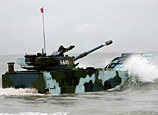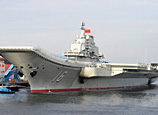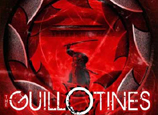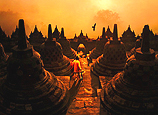
As cities modernize and erect new buildings, it's often a challenge to find traces of the past. Stories are hidden behind ancient walls now obscured by new construction, and memories are etched into stones that are eroded and ignored.
In Chengdu, capital of Sichuan Province, a temple dating back more than 1,500 years, stands in the busy downtown, quietly waiting for explorers to unearth its secrets. These hidden treasures reflect the history of the celebrated, tumultuous Three Kingdoms Period (AD 220-280) that arose at the end of the 400-year-old Han Dynasty (206 BC-AD 220).
In the Tang Dynasty (AD 618-907), a temple was built in honor of Zhuge Liang, prime minister of the Shu Kingdom during the Three Kingdoms Period. It was next to the Temple of Emperor Liu Bei. In the Ming Dynasty (1368-1644), the two were merged into one, now called Wuhou Temple. The main structure was rebuilt in the Qing Dynasty (1644-1911).
Wuhou, meaning minister of war, refers to Zhuge, the legendary military and political strategist credited with many extraordinary triumphs. In one tale, he collected badly needed arrows for his own troops by tricking the enemy into firing their own arrows onto a boat with a burning cover of straw.
Wuhou Temple, a famous tourist destination, was the first of many temples built in his honor. It also honors the emperor.
History lectures and archeological tours can be boring, if you only hear dates and facts from tour guides. Well, you can try to think of this visit as a Three Kingdoms treasure hunt, a challenge rather than a history lesson.
To start, look up at the front gate and you see a plaque that reads Han Zhao Lie Miao, or Temple of Emperor Liu Bei. Between the front and second gates are six stone steles each around 3 meters high. The most distinctive is Sanjue Tablet or the Tablet of Three Successes, which documents Zhuge's achievements and is protected by a transparent case. Sanjue refers to the three masters who created it: composed by Pei Du, the official and military strategist in the Tang Dynasty; calligraphy by renowned artist Liu Gongchuo, and engraving by the great stone carver Lu Jian.
Though the temple was named after Zhuge, the front shrine was dedicated to Emperor Liu Bei. It contains a 3-meter-tall gold-plated statue of the emperor in the center. On one side is a statue of Guan Yu and on the other Zhang Fei, the emperor's two sworn brothers and brave generals. Statues of their sons and grandsons are nearby.
But the emperor's son Liu Chan is not honored. His statue once stood in the hall but it was removed in the Song Dynasty (AD 960-1270) because he was an incompetent ruler and led the kingdom to defeat.
The colorful, distinctive statues wear vivid, exaggerated expressions, their huge eyeballs staring out at visitors. Some are gesturing. The facial expressions are like those on the famous masks from Sichuan Opera, known for its face-changing acts.
The Hall of Zhuge Liang is slightly lower than his emperor's. A gold-plated statue of Zhuge holds a fan made of crane feathers - in art and literature, he is often depicted with such a fan. Before him are three bronze drums decorated in floral patterns and said to be his battle drums.
A quiet red-walled passage with shade provided by bamboo takes you to the tomb of Liu Bei, also known as the Huiling Mausoleum. The walkway is so quiet and peaceful that time seems to freeze when you step in.

















![]()
